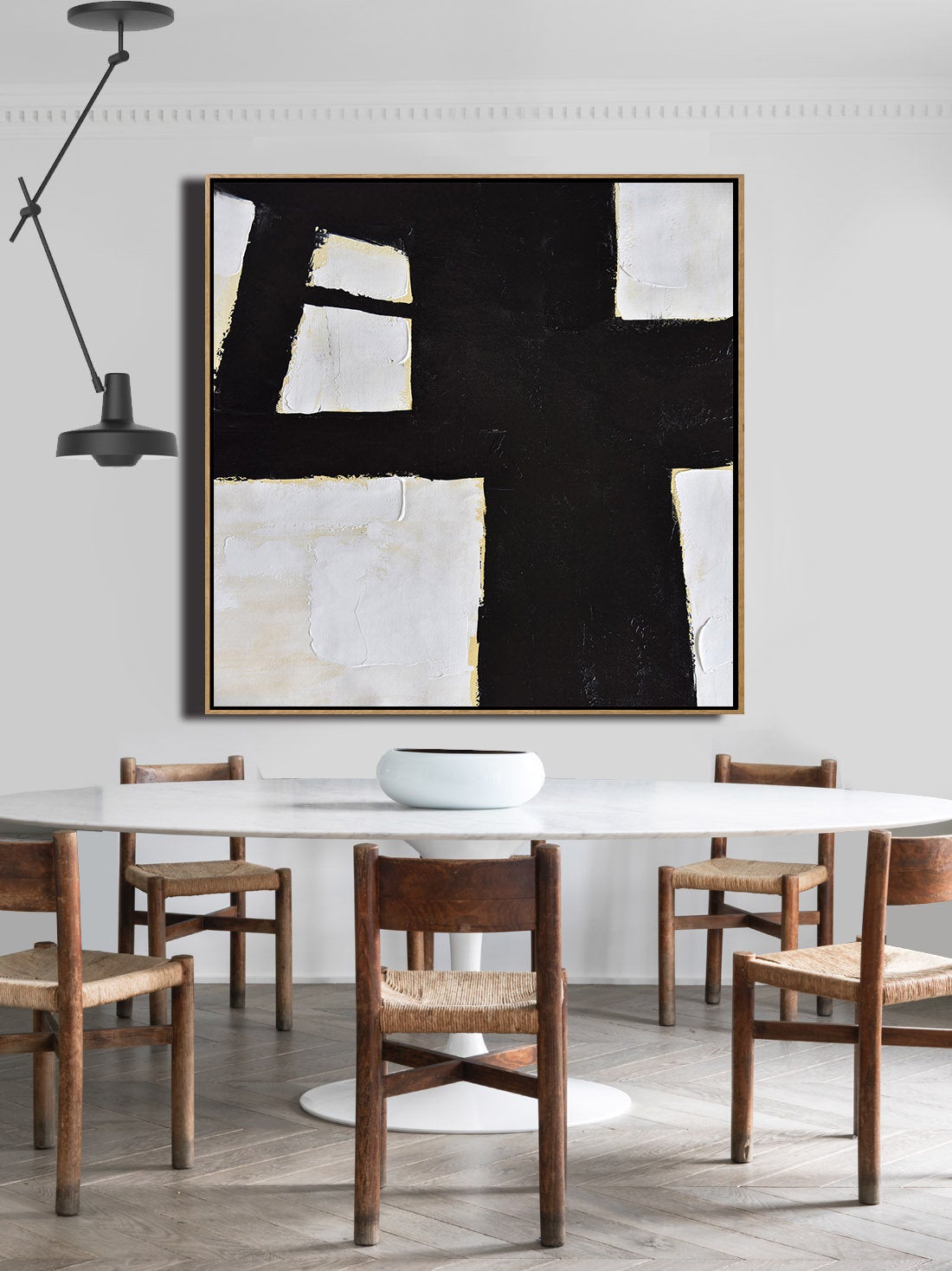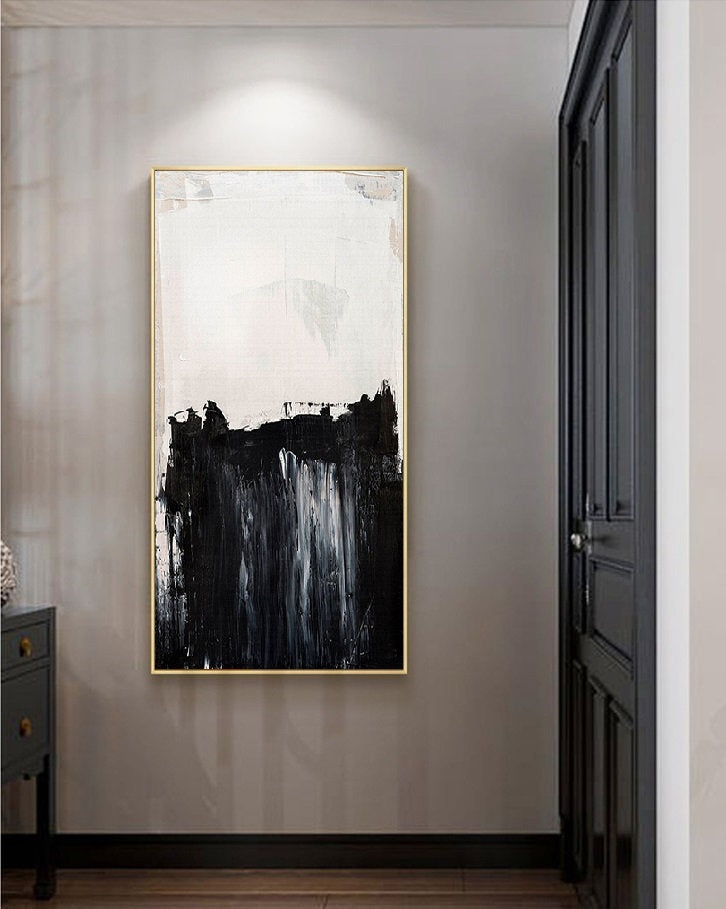The Enduring Beauty of Black and White Abstract Painting,A Timeless Art Form for the Ages
Black and white abstract painting has had a profound impact on the art world since its emergence in the 20th century. From early pioneers like Kazimir Malevich and Piet Mondrian to contemporary artists using new technologies, black and white abstract painting has continued to evolve and captivate audiences with its timeless elegance and versatility.

The roots of black and white abstract painting can be traced back to early examples of abstract art in the early 20th century. Artists like Wassily Kandinsky and Frantisek Kupka were experimenting with non-representational art, paving the way for the emergence of black and white abstract painting. At the same time, the use of black and white in traditional art forms like woodcuts and etchings had been established, giving artists a rich history to draw upon.
However, it wasn't until the emergence of non-representational art in the 20th century that black and white abstract painting truly came into its own. Artists like Kazimir Malevich, who founded the Suprematist movement in Russia, began to experiment with geometric forms and limited color palettes, culminating in Malevich's iconic Black Square painting in 1915. Piet Mondrian, a Dutch painter associated with the De Stijl movement, also used black and white in his paintings, creating compositions of geometric shapes that were simple yet striking.

In the mid-20th century, black and white abstract painting became synonymous with the Abstract Expressionist movement in America. Artists like Franz Kline used large-scale black and white paintings to create a sense of drama and intensity. Kline's paintings, with their bold, sweeping brushstrokes, remain some of the most iconic examples of black and white abstract painting to this day.
Another mid-20th century movement that utilized black and white in its art was Op Art. Bridget Riley, an English painter associated with this movement, used geometric patterns and optical illusions to create black and white paintings that were both mesmerizing and thought-provoking.
In the contemporary art world, black and white abstract painting has continued to evolve. Many artists have built on the legacy of mid-20th century artists, experimenting with new techniques and materials. Some artists have even incorporated technology into their work, using software to generate black and white patterns and shapes.
One of the hallmarks of black and white abstract painting is the deliberate choice of using only two colors. Black and white create a sense of contrast and texture that can be difficult to achieve with other color combinations. The versatility of black and white abstract painting means that it can be used to create a range of moods and atmospheres in a living space. A bold black and white painting can serve as a striking focal point in a room, while a softer, more organic black and white painting can create a sense of tranquility in a bedroom or meditation space.
In conclusion, black and white abstract painting has had a profound impact on the art world since its emergence in the 20th century. From early pioneers like Kazimir Malevich and Piet Mondrian to contemporary artists using new technologies, black and white abstract painting has continued to evolve and captivate audiences with its timeless elegance and versatility. Its deliberate use of only two colors creates a sense of contrast and texture that is difficult to achieve with other color combinations. As such, black and white abstract painting is a timeless art form that will continue to inspire artists and captivate audiences for generations to come.
